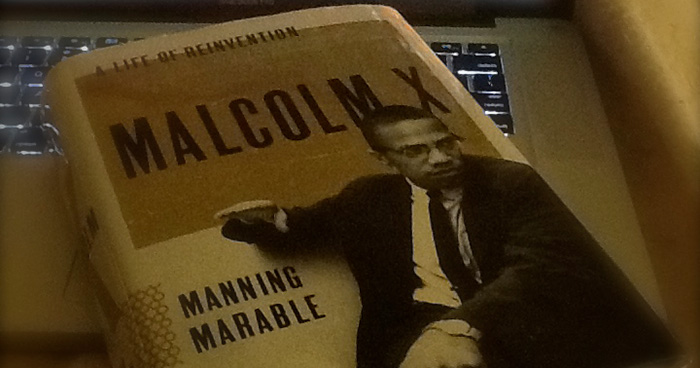On March 11 I attended a panel discussion celebrating the late Prof. Manning Marable and the opening of an exhibition of his collected papers.
I was struck by the love and appreciation in the room, and especially by the testimonies of Manning’s commitment to the wider public beyond the ivory tower. He was remembered as an institution builder and more than half the room was involved with projects and ideas that he initiated.
I never worked directly with Prof. Marable since I joined the CTL (then known as CCNMTL) just as we were completing the Malcolm X Multimedia Study Environment. The New York Times reviewed our web application after Marable passed away and his book was awarded the 2012 Pulitzer Prize. Reflecting on his legacy at the panel, I realized I had never published my conceptualization of Manning’s Malcolm X: A Life of Reinvention as a digital humanities project. While the book looks like a traditional piece of scholarly research, behind the scenes it was enabled by digital networks, digital media, and digital workflows.
Manning writes in his book’s acknowledgments:
My initial breakthrough came when I finally realized that critical deconstruction of the Autobiography held the key to reinterpreting Malcolm’s life. In this process, I was aided tremendously by Jonathan Cole, then Columbia University’s provost, and Vice Provost Michael Crow, who provided the financial support in 2001-2004 to fund the development of a multimedia version of the Autobiography. At one point more than twenty graduate and undergraduate students were employed by the Malcolm X Project, writing hundreds of profiles and abstracts of important individuals, institutions, and groups that were mentioned in the Autobiography. The Columbia Center for New Media Teaching and Learning, directed by Frank Moretti, produced our extraordinary website, http://ccnmtl.columbia.edu/projects/mmt/malcolmx/ [accessible on campus], which greatly accelerated the early development of the biography. A more recent multimedia resource presenting materials on Malcolm X is available at http://mxp.manningmarable.com/.
Although Manning’s research does not incorporate the stereotypical elements superficially associated with Digital Humanities research (e.g. tag clouds or networked hairballs), the backoffice processes that made the book possible relied heavily on networked digital tools. Manning researched his biography for over a decade, directly involving his students through research seminars, with over 20 research assistants participating over the years. In addition to the full text of Haley’s The Autobiography of Malcolm X, the multimedia study environment also contained thousands of annotations, as well as original television footage, interviews and photos from the FBI files. It is hard to imagine how this collaboration could have been facilitated outside of a digital environment.
It is important for us to look back on the last few decades before the term Digital Humanities was coined, and attempt to identify pioneering projects that anticipated what we now take for granted. Some, like the MalcolmX MSE, may also highlight important features of Digital Humanities projects that are often glossed over. For Marable, digital tools were essential to support the research process, although the final product looks traditional and familiar. It is important for us to recognize these efforts as Digital Humanities projects so we can describe their research value, alongside their teaching and learning value, that these methods deliver. In addition to his other honors and distinctions, I will always remember Marable as a pioneering digital humanities scholar.
Printed from: https://compiled.ctl.columbia.edu/articles/beyond-hairballs/

